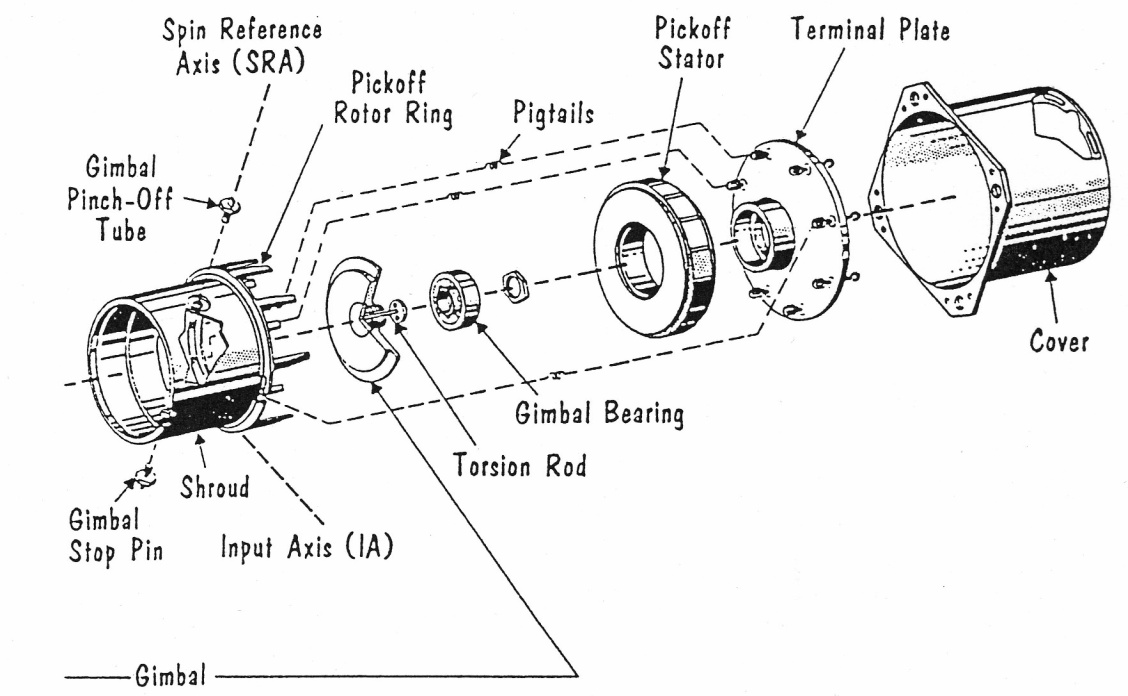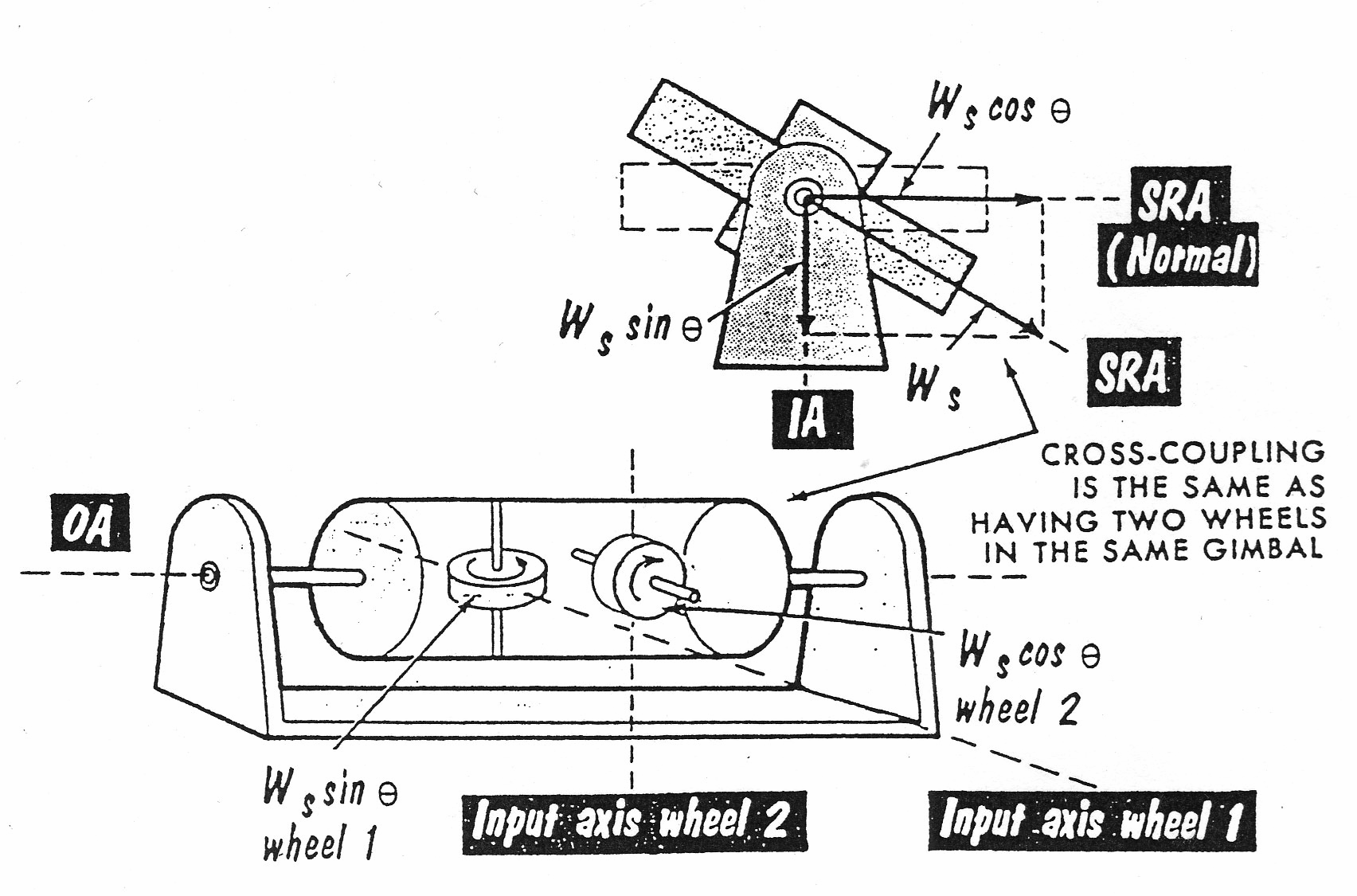
- •Часть 2 г. Москва
- •Рецензент к.Т.Н. Малахов а. А.
- •Contents
- •Text 1a. The Rate Gyro
- •Exercises
- •Text 1b. Figure of Merit
- •Text 2a. Damped oscillations
- •Text 2b. Rate Gyro and General Tests
- •Incorporate,V – соединять, помещать, включать, монтировать
- •Text 3a. Temperature Control for Constant Damping
- •Exercises
- •Text 3b. Cross-coupling Error
- •Text 3c. Compensated Roll Pendulum
- •Exercises
- •Text 2. Rifling
- •Text 3. Bikes, Hoops and Tops
- •Text 4. Ship Stabilizers
- •Text 5. Gyrostabilized Cars
- •Text 6. Binocular Stabilizer
- •Text 7. Integrating Accelerometer
- •Text 8. Direction Finders
- •Text 9. Remember Gyroscopics
- •Questions and problems
Exercises
EX.1. Form as many derivatives as you can from the following words and count
them.
operate (v.); viscosity (n.); incorporate (v.); use (n.); power (n.); apply (v.); maintain (v.); vary (v.); number (n.); reduce (v.); differ (n.); arrange (v.)
EX.2. Look through the text and find:
in paragraph 1 - sentences with infinitives (6).
in paragraph 2 – constructions “Modal Verb + Passive Infinitive” (2) and “Modal Verb + Infinitive” (1).
in paragraph 3 – “-ing” forms (7). Which are they: gerunds, participles, adjectives or nouns?
EX.3. In the following sentences find the constructions “Modal verb + Passive
Infinitive”. Translate the sentences using the revision pattern:
-
must
= нужно использовать
can
+ be used
= можно использовать
may
= можно использовать
A random torque level below 0.45 dyne-cm must be maintained to achieve this performance. 2. A cluster of integrating gyros can be assembled into a stable reference similar to a vertical or directional gyro. 3. If the antenna can be stabilized about the elevation and azimuth axes, the antenna is truly a stable platform about two axes. 4. While rotating at a high rate of speed the gyroscope may only be shifted by the application of a considerable force. 5. The combination of two torques must be balanced out by the viscous damping torque generated by the angular velocity of the gimbal about the output axis. 6. When the torques are so high the pitch gimbal can be precessed very quickly. 7. The pairs of pickoffs cannot be directly compared because they are not measuring the same angles. 8. The viscosity of the damping fluid must be maintained constant. 9. For accurate performance the ambient temperatures must be controlled less than plus or minus ½ deg F. 10. Although complete gimbal freedom (360 deg) can be provided on the roll and azimuth axes, the freedom about the pitch axis must be limited to less than plus or minus 90 deg to avoid gimbal lock.
Text 3b. Cross-coupling Error
Look through text 3B and give the reason for keeping gimbal deflection
as small as possible.
We saw before how a lower gimbal deflection results in a higher natural frequency. There is another reason for keeping the gimbal deflection as small as possible. Thus far in our discussion of gyros, we have been assuming that all the vectors stay at right angles to each other. The spin vector is always at right angles to the input angular velocity vector and to the precession vector about the output axis. This is not strictly true when the rate gyro is subjected to an input angular rate. As a matter of fact, the spin vector moves away from being exactly 90 deg from the angular velocity input vector by the amount of gimbal deflection around the output axis. We can resolve the spin vector (Ws) into two components. One, Wscos(gimbal deflection angle), remains perpendicular to the input and output axes. The other, Wssin(gimbal deflection angle), lies along the input axis.
This means that if there were an angular velocity about the normal spin axis (that which is perpendicular to the input and output axes), a torque would be developed about the output axis because of the component of angular momentum (the spin vector component, Ws sin: gimbal deflection) along the normal input axis. This torque would cause a deflection about the output axis in exactly the same manner as does the torque arising from an input about the normal input axis (Fig. 6 and Fig. 7). In effect, the rate gyro becomes sensitive to angular velocities about the two axes –instead of only one – and the output from the pickoff is in error. This error is called cross-coupling error and is proportional to gimbal deflection. The larger the gimbal deflection, the greater the cross-coupling error. This is another reason for keeping gimbal deflection as small as possible.
|
Fig. 6. |
|
Fig. 7.
|


